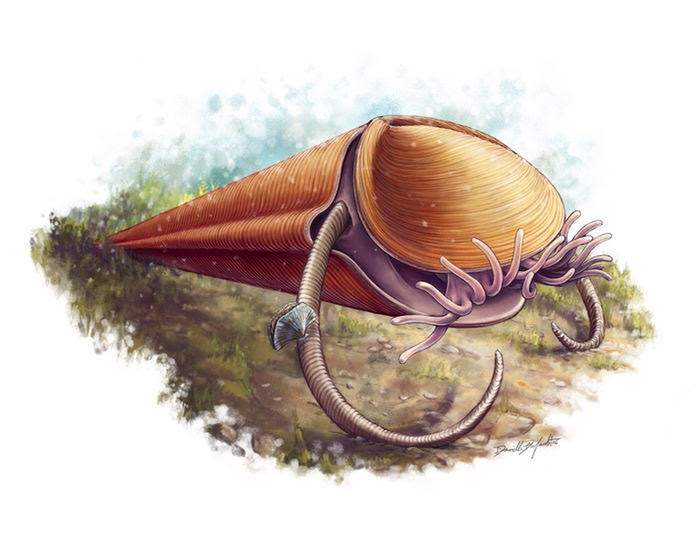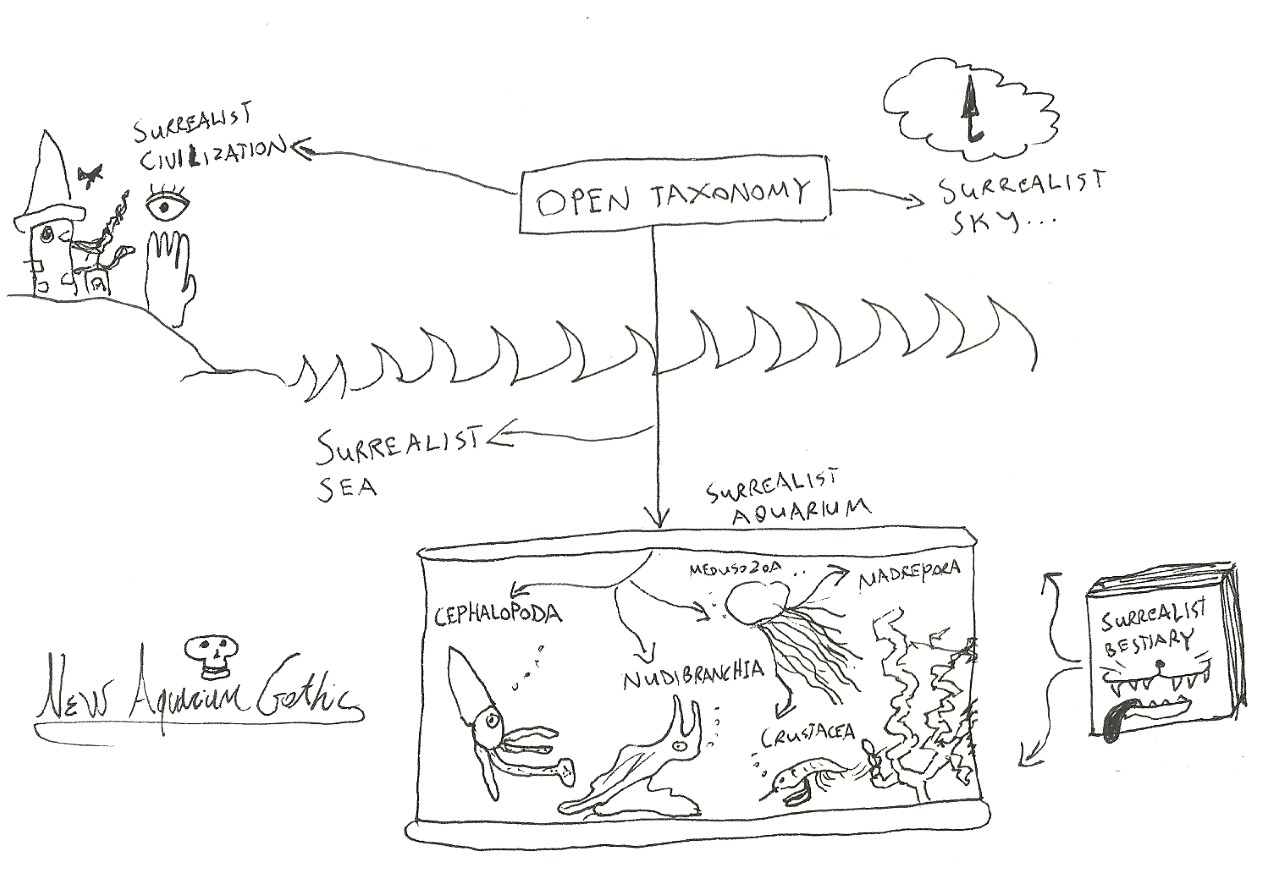
My object here is simply to project the draught of a systematisation of Cetology. I am the architect, not the builder. But it is a ponderous task; no ordinary letter-sorter in the Post Office is equal to it. To grope down into the bottom of the sea after them; to have one’s hands among the unspeakable foundations, ribs, and very pelvis of the world; this is a fearful thing…
Herman Melville
Après la deluge, moi. At the prompting of appeals from those who seek a shift in emphasis, to jump over the commodity of the end product and make that which is unfinished, tangential and reflective more prominent, here are some considerations from the Former Champlain Sea, as a late and purposefully troublesome postscript to our sea inquiry.
“The sea does not move, or else moves too much.”
-Merl Fluin
It’s the spirit of an “open taxonomy” that seems to be the form of organization most suitable to the results revealed by our inquiry. The sea is never closed. A New Year is not remarked in the trenches where the extremophile bacteria relax in the womb-like crevices of the volcanic. After the sea recedes, there is a very real chance of oblivion filling up the vacuum. What choice do we have? People once loved photo albums, reflecting on the memories of their past adventures by cracking decayed plastic and cardboard. Today some people suppose can scroll through them in an instant: what we saw, the fossils and specimens we keep in a storage locker somewhere, the drawing we did of the siren that we value more than the siren itself, which was nothing but a cloud reflected in a puddle, or was it a poodle’s reflection in the windowpane?
I cite this development from the BBC News, January 12th, 2017:
A strange animal that lived on the ocean floor 500 million years ago has been assigned to the tree of life, solving a long-held mystery. The extinct hyolith has a cone-shaped shell, tentacles for feeding and appendages that acted as “feet”.
It lived here too. And now, the much more recent Champlain Sea, where I currently am sitting, is dry as a bone. Shall we change the journal name to Hyolith? What more perfectly beautiful sequence of letters? Like the cover collage of Megan Leach, Hyolith is simultaneously a sepia-toned horror flick and a call to return to the depths.
“Bells made out of a grey swan’s wing.”
-T.D. Typaldos
The inquiry was intended to bring some semblance of organization to our expedition, but the sea has its own priorities. Some engaged with the themes in a more thorough way (whether in direct responses or via the games and collective responses like Stockholm, SLUT, Fresh Dirt, Inner Island and Leeds). Others used the opportunity to stowaway onboard to go on their own sea cruise. But sometimes it’s the Marx Brothers hiding in the barrel of herring, so we were happy to have had them come along.
At any rate, our initial vision of a biocommunist utopia beneath the waves has altered shape into a perplexing mirror-image. The seacries can also drown out rational planning. As Paul McRandle called them, “incarnate howlings”… In favour of Sade? I now wonder if the Sea has a Lettrist tendency. An early Debord film. The screen is so full it’s either black or white. White noise, or … A very violent insult to one’s existence. Landlubber! You think your memories are unmediated, but you live not just in a house of glass, your whole continent is glass, glass and fibre-optics.
I learned that for presentation, the glass of the aquarium is a tempting alternative to the negative capability of the screen. For our aquaria, which were also very much improvised stagings, we did not just play our roles onstage, but also had the laborious backstage duty of dramaturge-taxonomists. In the sea the material self-organizes, like life itself presumably, but isn’t it totally devoid of a parallel autonominalism? This is the dramaturge’s duty. We established family relations among our results. But only at the very end, almost an afterthought. Yet these aquamarine “cohorts” are, we hope, not temporary formations, but living entities in the surrealist aquarium.
We start with the imposing Cephalopoda, the obsessive, the cunning, the weird. The sea as other. It is an overruling passion for two great researchers of the eschatological tentacle: H.P. Lovecraft and Josie Malinowska. For the former, the eldritch, unwholesome intimations that come with a knowledge of the fish-like; for the latter, the orgiastic and feel good terror (and beauty!) of the octapocalypse to come. Prophets, backwards and forwards, of the sea. As Penelope Rosemont reminds us, here there be monsters, forever.
As we stumble away in terror, we step onto an unwholesome and utero-evocative member of the Nudibranchia, the tribe of the slime, membrane, poison and slug. Steven Cline is a powerful representative. Cool and (ir)reverent, depraved and overwhelming. The notorious phenomenology of the poisonous “blob”, which he has undertaken both in the seeping impropriety of collage and film as well as in his poetic texts (both in this issue and elsewhere). The oneiric flood that overwhelms our critical thought. Shocking. Overerotic. Waking up to a wet dream, or worse, a leech colony distributed across what we once tried to claim as “our” body. That which floods and is flooded. The body is not what it is supposed to be, we are Organs without Limbs nor Liquid Limits (OwLLLs). The calm and mournful lines of Emma Lundenmark, “in soft trailing steps”, but sea-steps, the sensitive and vulnerable slugsteps of the underbelly.
Stepping along with more security the defiant Crustacea, hard-shelled, not without an ambiguous past role adorning the telephonic apparatus of renegades, but still deliriously edible in their structural perfection. They can easily do away with bad memories, since they live forever. Fresh dirt, burrowing and clambering. The self-sufficient, moulting, biologically immortal surrealist adventurer. Surrealist heroism, in the quest of the beautiful floor. Here we find an articulated aural response from the ocean, including Fresh Dirt’s Sumbergence! Sympatica, which devours the lobster elegantly and with an unexpected musical mastication. At the bottom of the sea, Janice Hathaway’s archaeology is staring back at us from before recorded history. But it doesn’t have to live forever, these creatures are only biologically immortal, violence is still available: Beatriz Hausner re-smashes Maldoror’s crab to the great delight of children everywhere. Allan Vilu turns his diabolical machine, itself a crab, against the horror of school and work and the city. A good reminder: constant capital is a kind of crustacean too.
Above the lobster’s head, mesmerizing and airborne, Medusozoa, an exclusively electronic category, invented for the purpose of showing the moving, convulsive and stinging beauty of the image as presentation. Yes, it still hurts if you touch it. Rik Lina’s Psychalian utopia drifts along, charmingly armed. To keep such creatures in an aquarium requires a very high degree of skill. It dies very easily in captivity. On this point, although we received a few drawings and paintings that opened our eyes to the sea of the hand, the tactile sea (Maurizio Bracaleoni’s sirenic cogitation, Karl Howeth’s coraline emergence, Laura Lake’s humorous cephalopodic emasculation and Guy Girard’s oneiric waterpolo) it seems that for whatever reason the collage-mass lends itself to sea-based existence. Collective or individual, we can only conclude that the sea itself is great backdrop with pasted on play actors.
But perhaps the play hardens into a multiplayer reality. Madrepora, the collective in its constructivist period (1917-1920?), will build upon itself until it becomes a mountain-fortress rising out of the depths to confront the Milky Way, replete with devil Taoist-Alchemists and bandits, or it will not be. This is a fortress and a game at the same time. The oceanic becomes the aquarium itself. This is the cohort in which I place the most hope. Perhaps it is the closest of the lot to “absolute surrealism”. The Stockholm Group call them “The seven hidden tribes of krill”. CM Lundberg’s fishmountain cat celebrant soldiers. Crack troops in the game, doomed to an eternal charge of the light brigade…
Or they will survive in our great aquarium, specimens without an environment. We listed the dead or the dying in our game of the Sea Obituary. It was just a prelude to the next century of submarine extinctions. Our specimens are sent, perhaps via mail, in postcard and zine form. Little fossils, fosslings, of superior latent fearsomeness. A “crystaline octopus”, as Casi Cline puts it. The philosopher Meillassoux speaks of the “archefossil”, the objective, carbon-dated material evidence of a past before humanity, as the key to breaking out of Kantian correlationism. The encounter with the traumatic and Lovecraftian species of the Old Ocean, this is the sensation of perpetual discovery we wish to perpetuate, going further than Nemo and the his presurrealist vehicle Nautilus in our mad drive to collect, classify, eat and sleep among the old-oceanic. These are the primordial ephemera we need to maintain a strong link with the marvellous (see the Postal Transmogrification post for more on this angle).
We see to it that in the open and inexhaustible taxonomy of the marvellous, objects name themselves after all. Our concept of the New Aquarium Gothic is revealed to be a kind of cartoon reel with famous characters and an amoral mechanism. Duration 2min36secs. Let’s watch.
Argument, or, The Magic Lanthorn in the Aquarium
Where we find submerged, among the skulls and castle ruins an aquatic “automate”, depicting a recurring dinner scene. Therein we see: a moving model of Georges Méliès sitting down to discuss business with Qu Yuan, the shaman-poet of the Li Sao. The Méliès figurine cuts into the roast, which fall into rectangular fragments of comic strips. These float up in the water to the top of the bowl, where they are almost discernible. The figurine of Qu Yuan writes out what appear to be automatic odes based on the comics. A madreporic colony is spawning at their feet, slowly filling up the entire bowl. A chime version of the Looney Tunes theme plays itself in time with the clockwork motion of the figurines. The mechanism is very delicate.
“The disappearance of humanity is a bad memory.”
-David Nadeau
It’s like walking out of that first screening of Battleship Potemkin. The ocean revolts. The scales appear beneath our flesh and we grow gills. The sea is a great collage game, like the monsters bred at Leeds and Inner Island. The sea is also pirate radio station.
And so we return from the sea with new and miraculous weapons. Let’s end with a modest proposal for a new alteration (or derangement) of perspective, maybe in lieu of calls for outright iconoclasm against the image, the commodified product or electronic communication. The fear here is of spinning off too hastily into a negative humanist essentialism, limiting what is or isn’t an “authentic” experience to predefined categories. Situationist détournement and board gaming are still preferable, and more adventurous, than total abstinence. The risk is not so much in detailing the corrosive effects of electronic media (which is certainly true), but rather the perplexing mirror that makes everyday activity seem “unmediated” by comparison. This gives too little regard to the role of pernicious and stifling ideology in our daily lives. The problem with the paucity of the virtual is precisely that its flattening effect has a tendency to extend beyond the screen where it is least suspected. Surrealist activity will be the dialectical short-circuit that triggers a meltdown of the whole façade; collapsing at once the virtual and its swarm of subsidiaries in the marvellous and comic glow of the magic lanthorn at the bottom of the surrealist sea, with snarky captions and subversive cartooning.
In the service of business deals far removed from people’s lives, the bearers of Capital continue to smooth out the electronic runway over a mass of unsuspecting heads. In defiance of both facile electronic solutions and the potentially naive idolization of a humanist retreat, I might suggest, as a start of something different, an “aquarization” of presentation itself. This could mean:
* That The Spectacle itself cannot be overcome through abstinence, but through a subversive and hilarious derangement in the vein of a bonsai miniature. Barnacles.
* That presentation might be considered merely a small home for a real life form.
* That presentation could be a miniaturized diorama of its own inhabitants (whether the ego, the egregore etc).
* That presentation can be tactile and it can be portable. This portability means it has the potential to show up in unexpected places: transmogrified among bills and correspondence in mailboxes, at the bottom of a riverbed, in the back of a dumpster, ideally anywhere but a gallery (digital or otherwise).
* If galleries are used, or their extensions cinemas and malls and websites and forums, they could be converted into aquariums before they are deemed fit for our little sea monkeys. We suggest submergence underwater, in the same vein as the Stockholm group played in “Life Partially Submerged”.
* That presentation can prognosticate aquatically. That is, prediction and aquaprophecy, the kind of predictive dreaming of Cthulhu, a message from the depths one sleeps on at the Fleurs de Lys building in Providence, and to be done with airy, monotheistic and statist predictions of the land and sky.*
* That presentation steep itself in the humour of the backlit, the depository of our desires, and the oneiric capabilities of the submarine atmosphere. Only then will the little crocodile survive with gently smiling jaws.
* That aquarized presentation attacks both progressive futurism and nostalgic humanism in the form of the black joke, through cruel but silly mimicry. Blobfish.
* That objects in the aquarium can effectively conflate reality, the dream, imagination, or desire in such a way that skirts around the censorship of rationalist discourse and the flattening of hyper-social media; that we still insist on presenting our creatures with a playground of the marvellous.
-Jason Abdelhadi
*It’s fortuitous that we were furnished with an older aquatic text, Mattias Forshage’s Notorious Bathyscopy, where you will find, if you look carefully, that it predicts through the uncanny and ever-proven power of automatist prestidigitation, very many of the games and themes of the entire issue. I myself remarked its uncannily accurate description of both Surrealist Battleships: “A naval battle was playing, but it did not resemble the game of chess of the ships in bottles.” And also Marine Philozoophy: “Because such a philosophical fish soup couldn’t fill the stomach of anyone in the entire zoo”. Perhaps it could be sifted through for even more insight…

